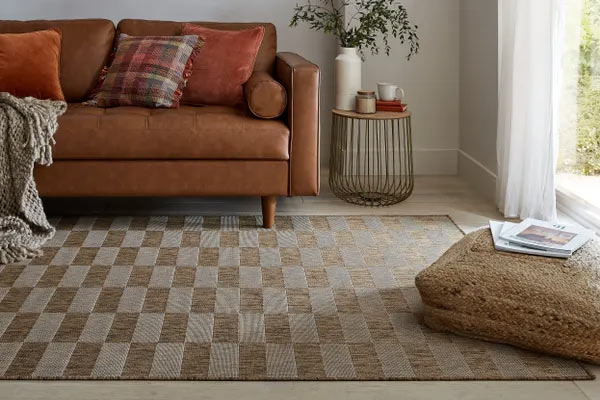Indoor rugs are decorative textiles typically placed on floors to enhance both aesthetic appeal and comfort within indoor spaces. Commonly used in homes, offices, and other interior environments, they serve multiple functional and stylistic purposes. Beyond providing warmth underfoot, indoor rugs also contribute to the overall ambiance of a room, helping to define spaces, add color, and create a cozy atmosphere.

Contents
Definition of Indoor Rug
An indoor rug can be defined as a piece of fabric designed specifically for use on indoor floors. Unlike carpets that are often wall-to-wall installations, rugs are generally smaller and can be easily moved or replaced. They come in various shapes, sizes, and materials, making them versatile and suitable for different home interiors. Characteristics of indoor rugs may include softness, durability, and resistance to stains, depending on their material and construction.
History and Origin
The history of indoor rugs can be traced back thousands of years, with early versions originating from various cultures around the world. The art of weaving rugs began in regions like Persia, where skilled artisans crafted intricate designs using wool and silk. Over time, the use of rugs spread across continents, evolving in styles and materials. In modern times, technological advancements have enabled mass production of indoor rugs, making them accessible to a wider audience, while preserving traditional craftsmanship in high-end variations.
Uses and Benefits
Indoor rugs serve various applications in daily life, including:
- Decorative Elements: Enhancing the aesthetic value of a room by adding color, texture, and personality.
- Comfort and Warmth: Providing a soft surface underfoot, which is especially beneficial in colder months.
- Noise Reduction: Softening sound within a space, contributing to a quieter and more peaceful environment.
- Safety: Offering a non-slip surface that reduces the chances of slips and falls, particularly in homes with children or elderly individuals.
How to Choose and Use Indoor Rug
When selecting an indoor rug, consider the following factors:
- Material: Choose a material that aligns with your lifestyle (e.g., wool for luxury, synthetic for low-maintenance).
- Size: Measure your space to determine an appropriate size; too small can look awkward, while too large can overwhelm a room.
- Style: Select a design that complements your existing decor.
- Purpose: Consider whether the rug will be used mainly for decoration, comfort, or both.
To use an indoor rug effectively, ensure it is properly placed and secured to prevent movement, and think about layering with larger area rugs for added style.
Maintenance and Cleaning
Proper care and maintenance can extend the lifespan of an indoor rug significantly. Here are some tips:
- Regular Vacuuming: Keep dirt and dust at bay by vacuuming regularly, especially in high-traffic areas.
- Spot Cleaning: Attend to spills immediately to prevent stains. Use mild cleaning solutions and dabbing motions, avoiding aggressive scrubbing.
- Professional Cleaning: Consider professional cleaning for deeper cleans, especially for high-value rugs like wool or silk.
- Rotation: Rotate rugs periodically to ensure even wear, particularly in areas that receive more foot traffic.
Conclusion
Indoor rugs are more than just decorative elements; they play essential roles in enhancing comfort, safety, and aesthetic appeal within indoor environments. With various types available, there is an ideal indoor rug for every space and style. Understanding their history, usage, and maintenance will help you make informed decisions and fully enjoy the benefits they offer in daily life.
